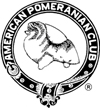Many Pom lovers are surprised to learn there is great variety even just among oranges! They vary in shade from very pale almost cream, to nearly reddish. Orange Poms must have black points (eye rims, nose, lips, and pads).
There are primarily two genes responsible for creating “orange” poms. Poms that appear orange (phenotype) as adults may be of two genetic types (genotypes) – Orange and Recessive Orange.
Click the links to learn more about orange color genetics or visit our color genetics section.
An orange colored coat varies from a light orange to a deep rich orange and can look almost reddish. Newborn puppy appearance will reflect this genetic difference. They are often born looking “brown” and duskier in color than they are as adults. As a result some people mistakenly think their orange puppies are sable, but the coat will become progressively more orange as the dog matures. They will typically retain some black hairs on their tail tips and have black whiskers.
Orange (Agouti type)

Orange newborns 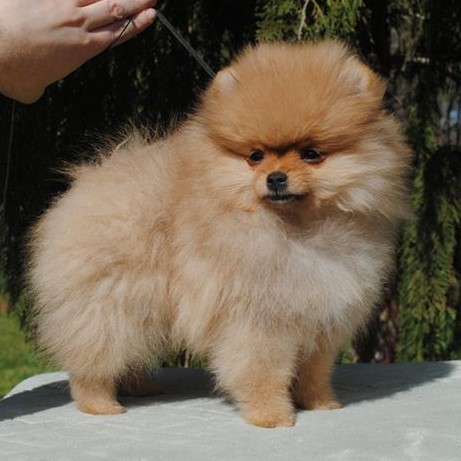
Orange 8 wks 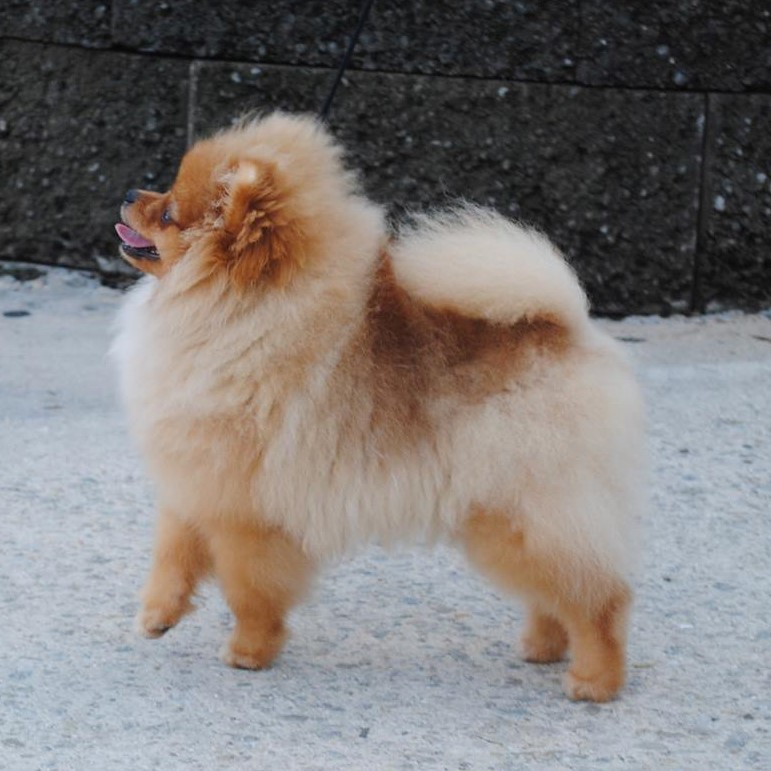
Orange 6 mos 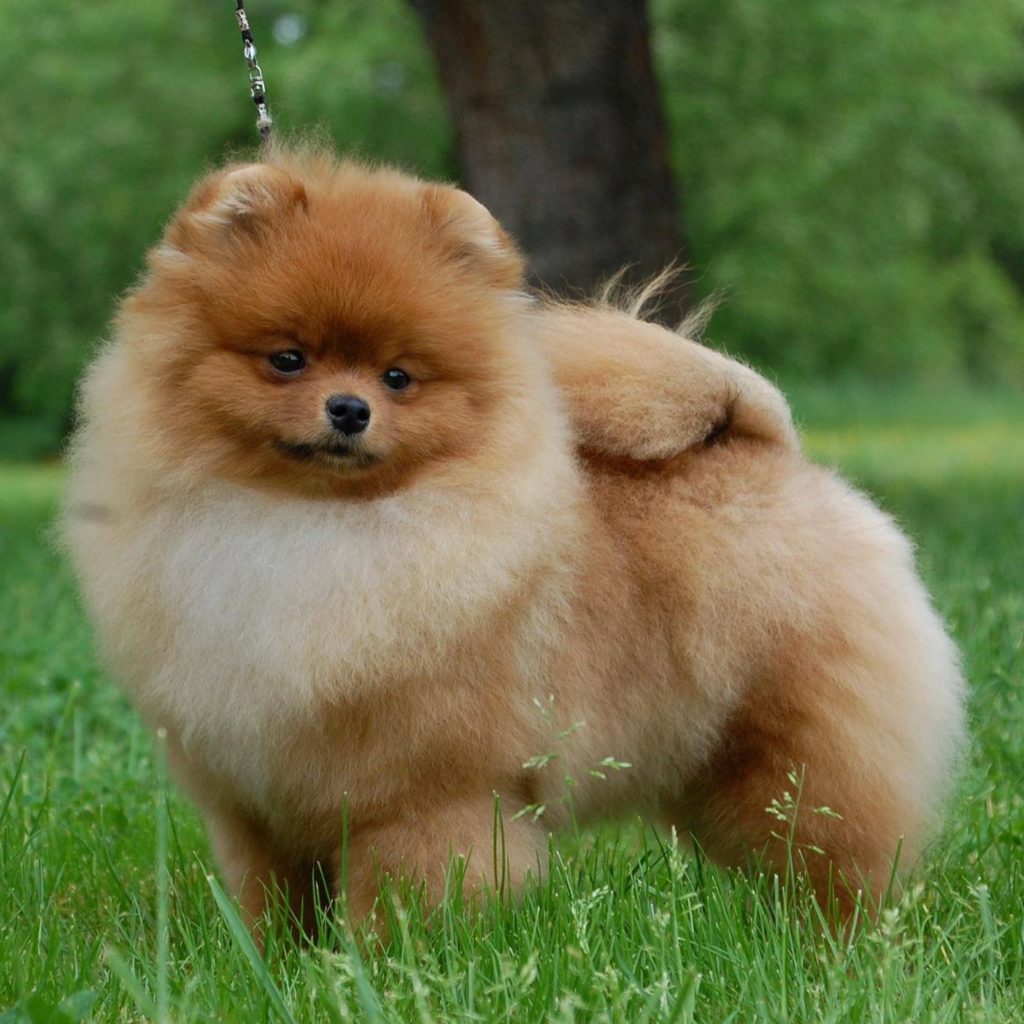
Orange 6 mos 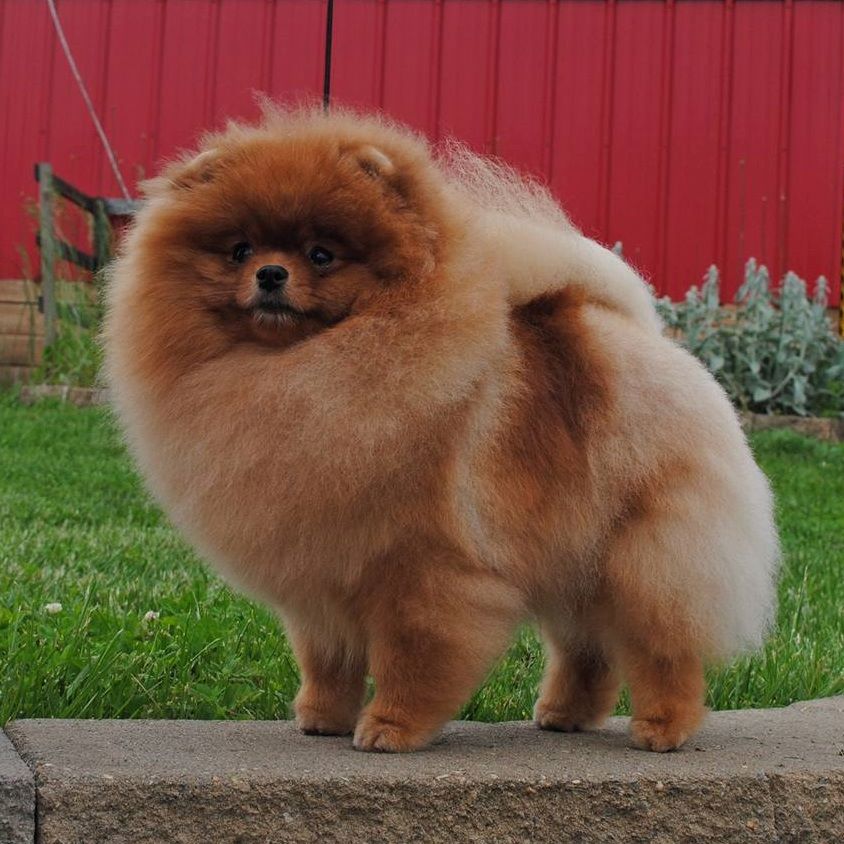
Orange adult 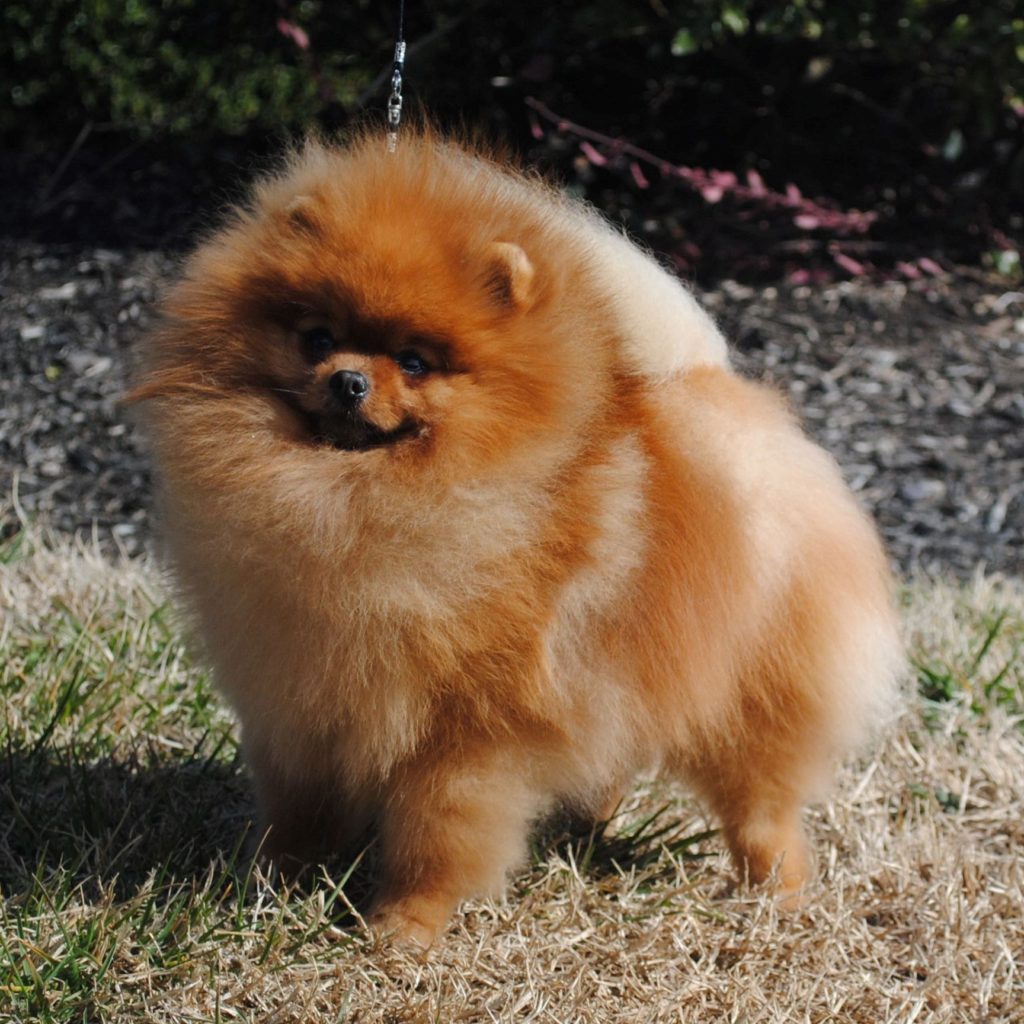
Orange adult 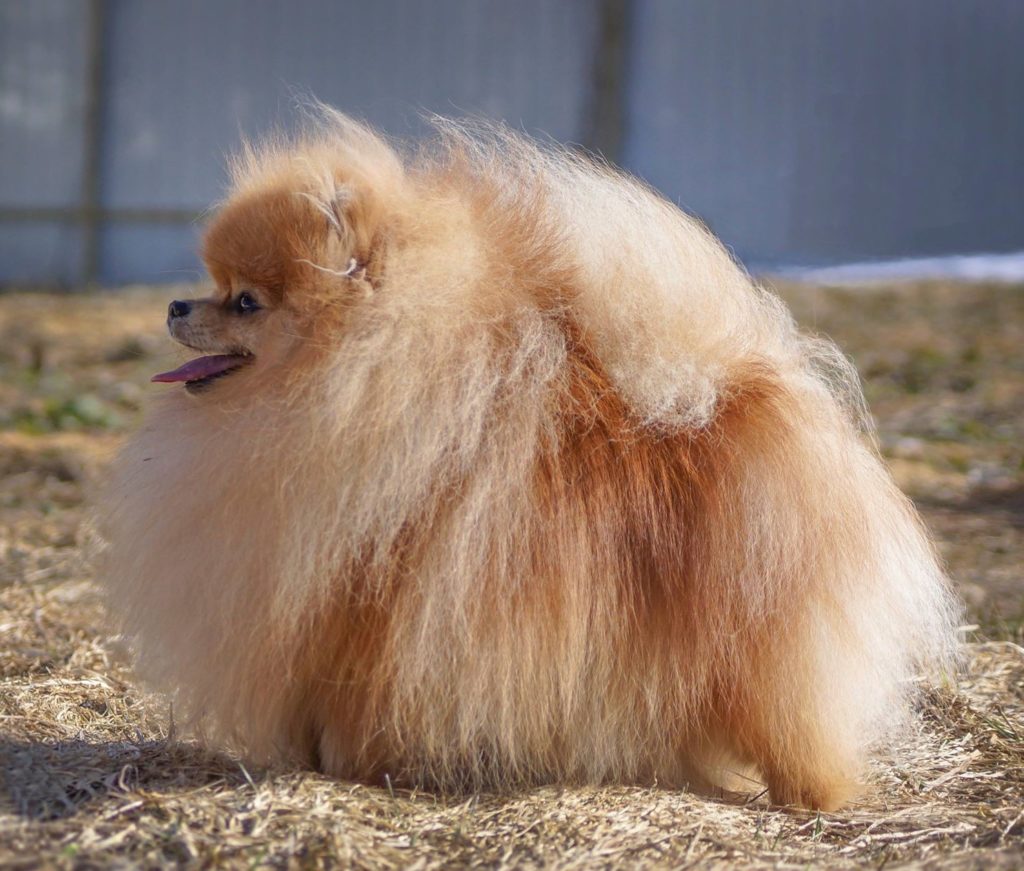
Orange Adult
Clear Orange
More commonly a puppy is born dusky (with black hairs) and the coat will become progressively more orange as the dog matures until it is bright orange. Otherwise the puppy is born clear (without any black hairs).
A “clear” orange is an orange Pomeranian that has no black hair in its coat. Puppies are usually the color of “butterscotch” but can also appear cream at birth and and they will have clear/straw colored whiskers (NOT black). The recessive e gene from both parents is responsible (both genes at that locus have the allele for orange i.e. “ee“).
As adults they can vary in shade from almost cream (in fact many creams are probably ee) to a brighter deeper orange. Clear oranges are almost indistinguishable from their agouti counterparts, with the whiskers and a total lack of stray black hairs being the only “tell”. Some do remain paler and sometimes the pigment on their noses fades with age more than the agouti type oranges.
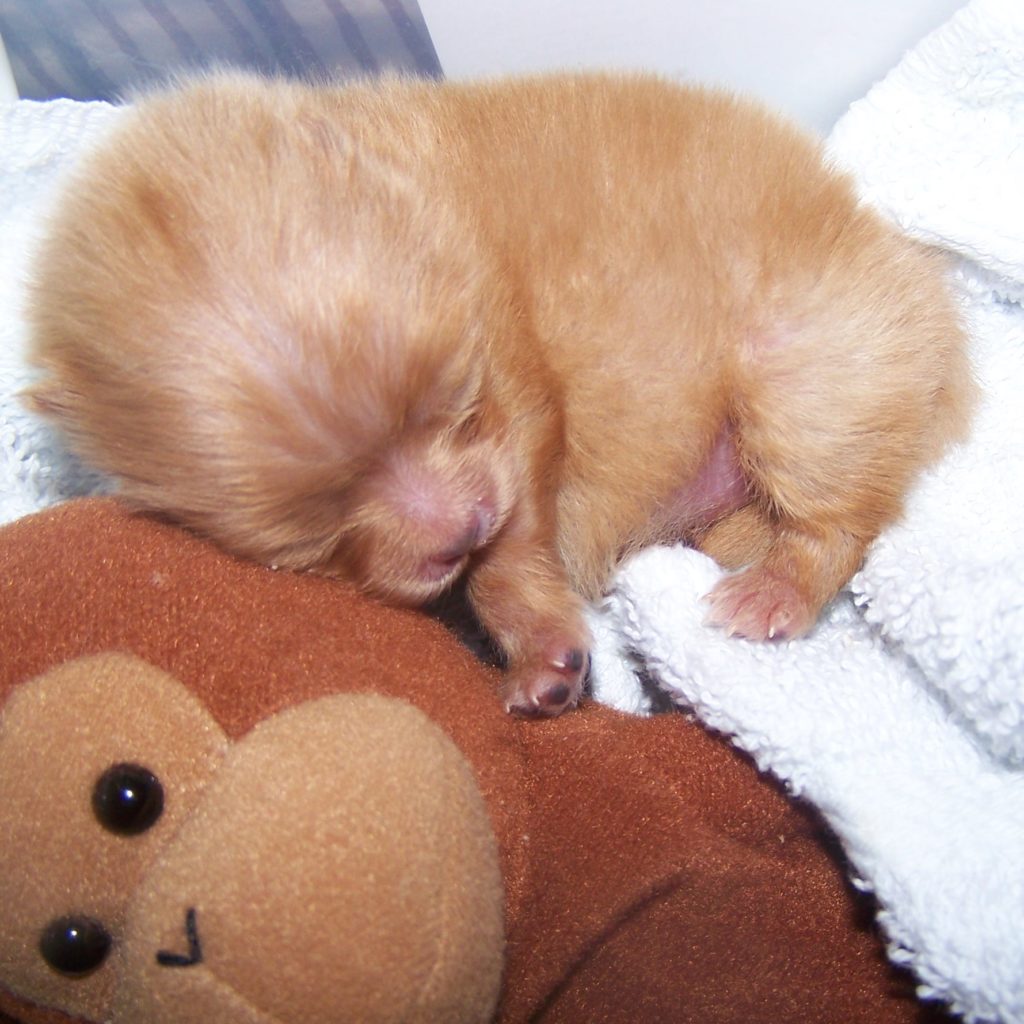
Clear Orange Newborn 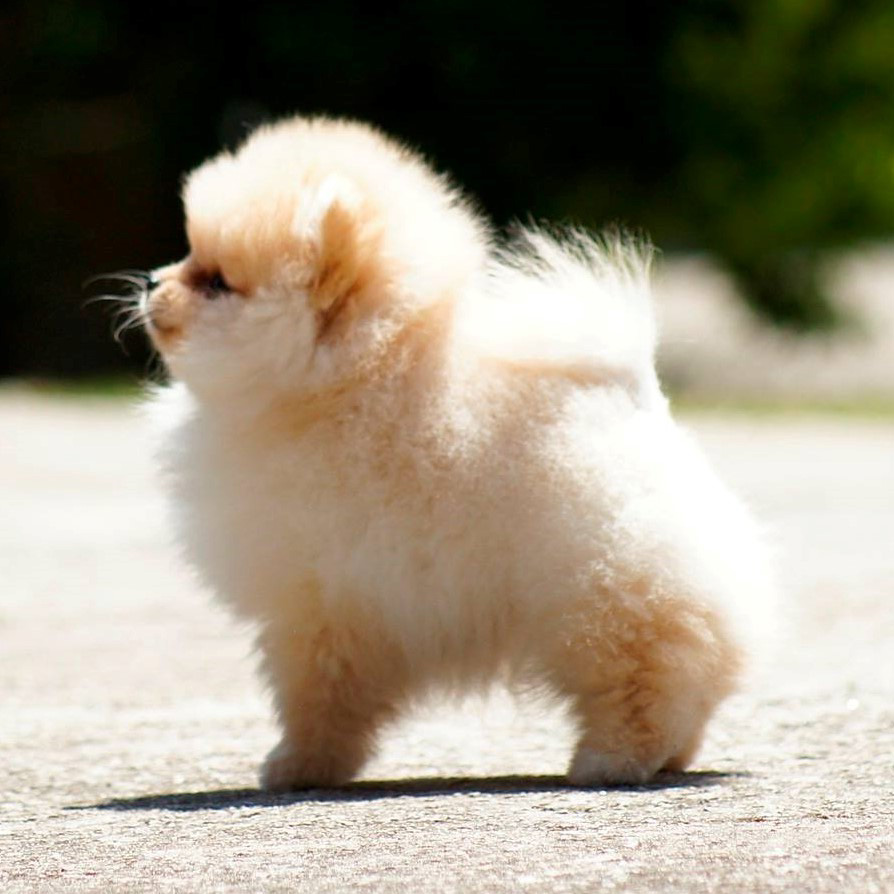
Clear Orange 8 wks 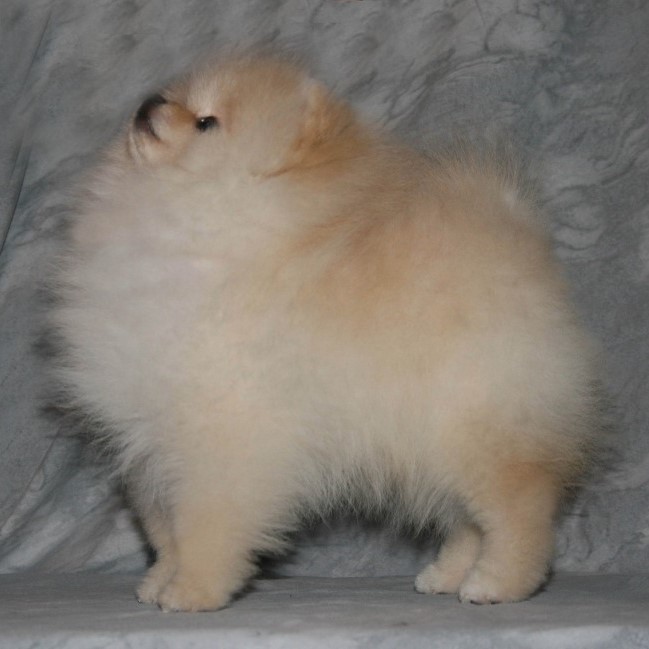
Clear Orange 14 wks 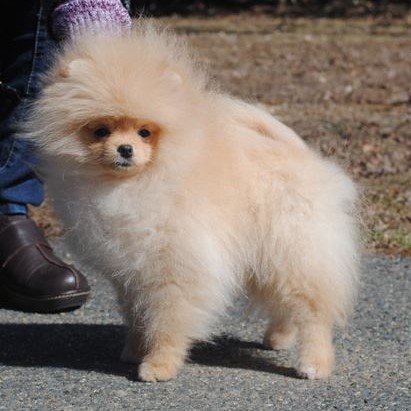
Clear Orange 6 mos 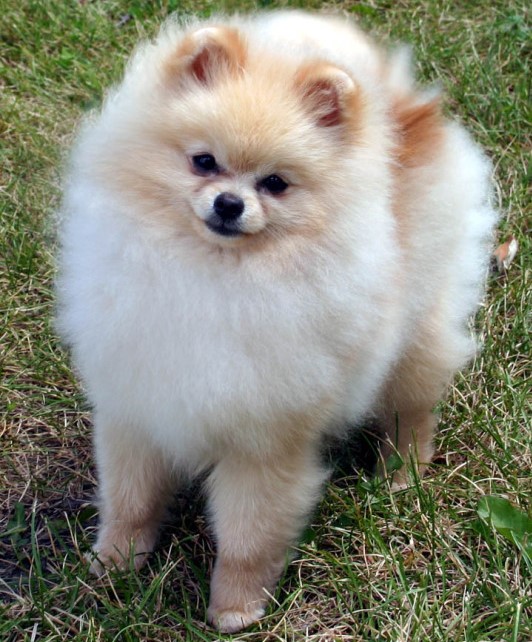
Clear Orange 6 mos 
Clear Orange Adult 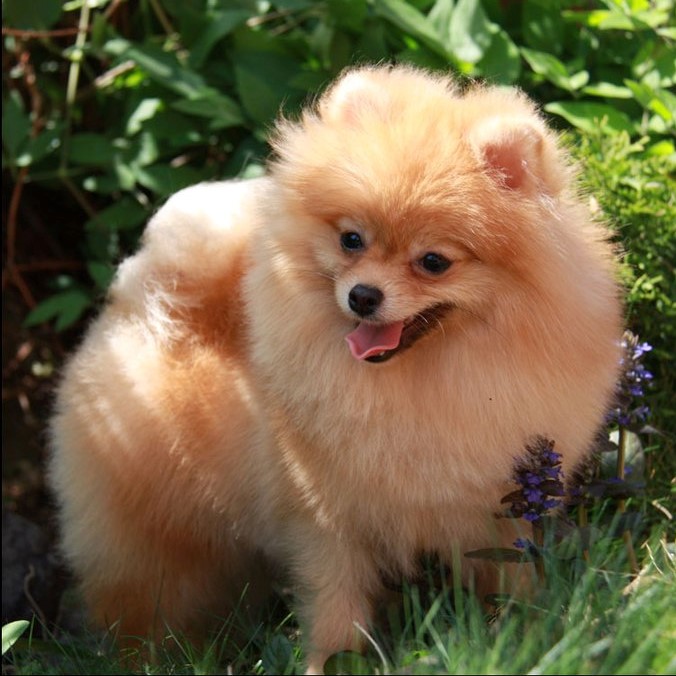
Clear Orange Adult
